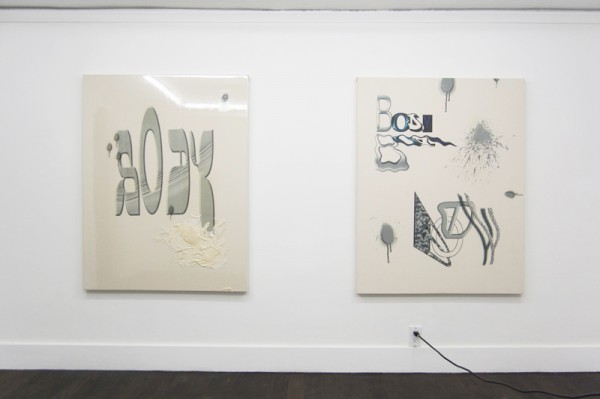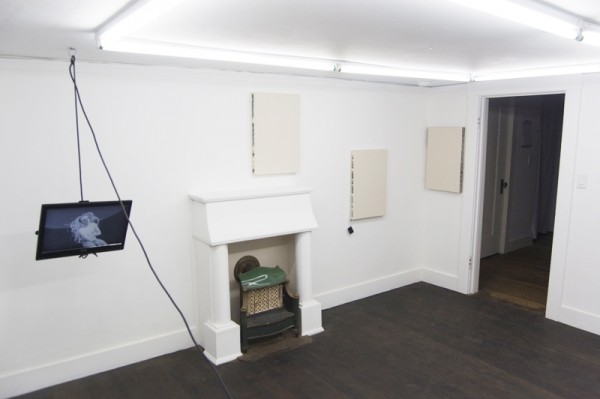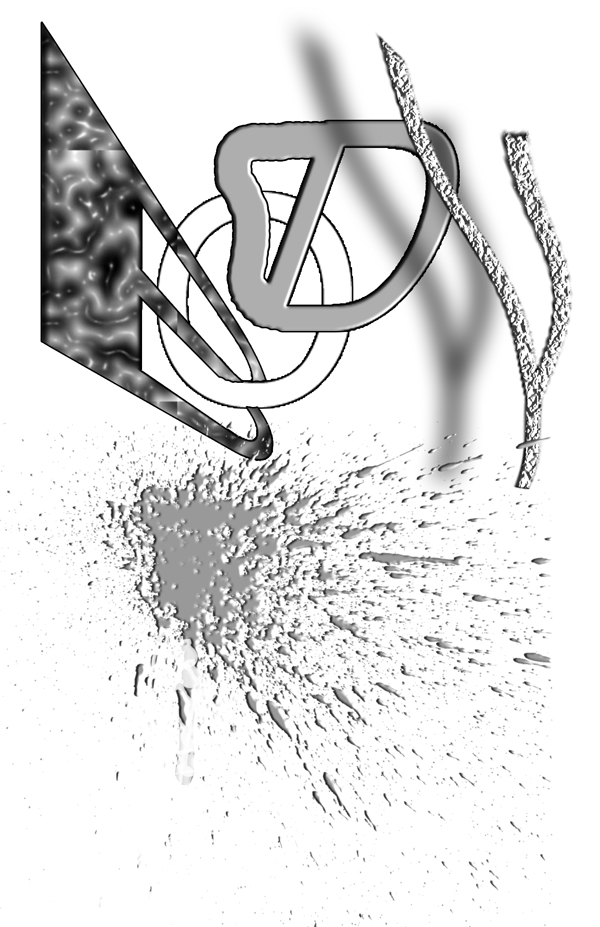Body by Body
Sunday, 27 November 2011
Body By Body at Important Projects
Essay by Nicholas O’Brien.
After downloading source material from mediafire, listening to a motivational mp3, seeing installation pictures, and playing in an interactive 3D recreation of their current exhibition at Important Projects in Oakland, it seems no surprise to me that Body by Body were “[attempting] to ‘smear’ the exhibition out over time.” Through the multiple layers of engagement and several avenues for participation, Body By Body (otherwise known as Melissa Sachs and Cameron Soren) invest a great deal in developing lasting dialogs that can be sustained beyond the initial “hype” that goes along with the physical manifestation of work that primarily exists through networked exchange. As a result the pieces on display from October 29th to December 3rd take on the form of traditional gallery objects that serve as metaphorical placement holders. The allegorical “paintings” and “video” – speaking very loosely – create a bridge between the expectations of differing art communities that exists online, offline, and somewhere in between. The tension built from attempting to navigate these zones of production and distribution become focal points of criticism of attention. Each venue, be it digital or analog, acts as a comment on the other. The bouncing back and forth between these arenas creates a subtle reflection on the properties and materials that each field provides.
What Body by Body is skilled at showing is how the striking similarities between mediums are more interesting limitations to work through than around. The work accomplishes this by employing the rhetoric of an art gallery and deviantART in equal parts as a platform to question the ways in which communities and dialogs are generated dependent on, or a result of, the infrastructure from which they emerge. When viewing the work, one begins to see how context seems essential in determining the value and success of a work, since context regulates so much of the vernacular applicable for judgement or appreciation. The more one looks, the more one observes how Body by Body play within these various idioms to pose questions about the efficacy of standards or quality in art and culture.
In one particular work, a slideshow of superimposed hyper-realist sculptures aimless float in hyper-render RAY-traced fractal drawings that play on a carelessly hung consumer-grade flatscreen. The precarious installation, combined with the purposefully casual juxtaposition of high and low, question how artists define craft and skill when moving between creative/cultural platforms of distribution. Instead of prioritizing one condition over another, all methods not only seem even but necessary. One begins to see what is initially considered impromptu or accidental is instead essential and deliberate. When this knowledge starts to sink in, the otherwise immediate joke quality of blank canvasses and work made for a keychain wears off and a more sophisticated complex motivation takes its place. In other words, the work should not be judge on aesthetic, or scale, or even on quality of installation, but instead should be measured by a metric bound to the ways in which our traditional expectations dictate so much of our formulaic reading of art.
An underlying question then emerges: how can an artist immersed in the language of critical theory and fan-based image making find middle ground for both contexts to coexist? For Body by Body, the answer seems to reside in how they use their own pseudonym as a self-reflexive means to an end; a way of displacing the pressure, anxiety, and commitment to something singular and univocal. Opting for an alias, Body by Body conjure an ironically disembodied and artificial identity as another layer of abstraction to operate within. This is not to say that any more “layers” are particularly needed to prove any specific point, but the overuse the Body by Body brand reinforces a (self) parody at play throughout the show. This purposeful distance of personality – combined with the ongoing investigation of how the conventional reading of art applied to emerging fields often overlooks content – grounds the initially humble-looking show into a more cultivated dialog that extends well beyond the walls of the gallery.




